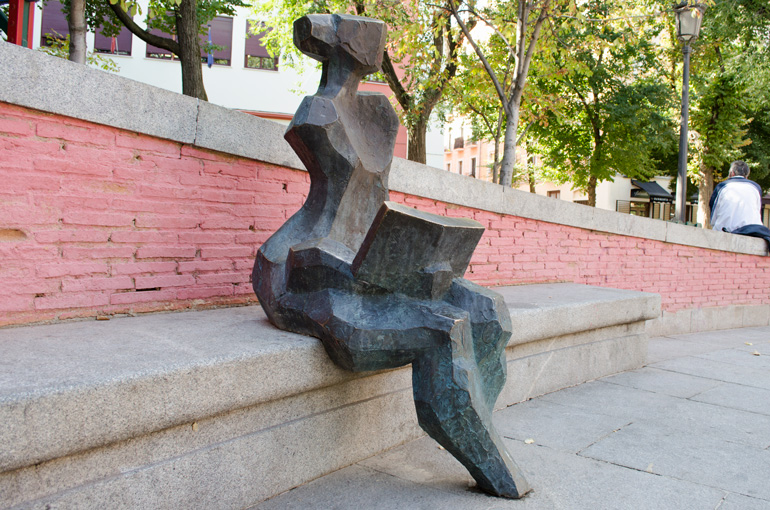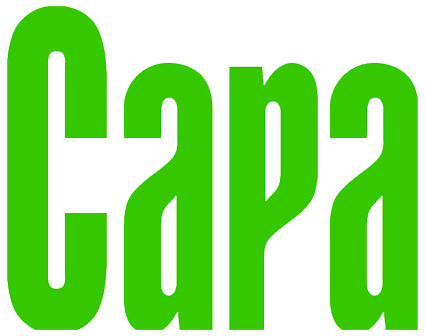Emilio Velilla Ubago
"AN ART PIECE BECOMES A CLASSIC WHEN ITS ABILITY TO PROVOKE A MESSAGE DOES NOT DWINDLE OVER TIME"In the tranquil setting of his workshop, surrounded by his pieces and wax residue with which he translates ideas to the language of art, we speak to Emilio Velilla Ubago. The sculptor, with extensive and acclaimed professional experience, teacher and student of great masters, reflects on his works, his power to communicate, his value and the complex process of artistic creation.
By: Fátima Ruiz
What is sculpture for Emilio Velilla?
I think sculpture is essentially another part of humanity and civilisation's creative thinking. Creative thinking takes place in many scopes: artistic, scientific, etc. Sculpture is a form of creative thinking that is also factual and highly sensitive, which requires continuous experimentation with materials. It is a form of expression through which you can discover yourself and a little bit about the universe upon which your very own existence is based. That would be the generic definition for me.
How did you first start working with Galería Capa?
It was a project that Fernando presented to us at the time, a group of sculptors who shared a workshop on Gutierre de Cetina. It was a very exciting project because its purpose was to create a collection of small-scale bronze works from different artists. There was a more extended edition to reach into pockets with the aim of creating a culture of buyers. This led to the personal collection at the gallery
What distinguishes the small-scale works on display at Capa Esculturas?
Small scale (15 or 20 cm maximum) belongs exclusively to this part of my relationship with the gallery, with Fernando's project. They aimed to be more direct pieces, more devoid of substance and like little bits of amusement, something that you could have at home that did not require deeper reflection beyond...
Your work is saturated with metaphors, mythology, symbolism...what inspires you?
There is effort required to face daily life, because the human figure appears representing simple situations and without overly formal selling points. Besides, the moment of inspiration is complex. Sometimes you have it and you realise afterwards why it arrived.
What is the soundtrack in the artist's workshop? Is it important to create an atmosphere?
I discovered classical musical, partly due to the advice from my good friends and teachers, as well as thanks to Radio 2 of the National Radio of Spain (RNE). At that time there was a line-up of fantastic presenters and scriptwriters that we could enjoy listening to. We used to listen to classical music non-stop, from the moment we went in to the moment we left.
Do you always manage to make your ideas become a reality and how you imagined them to be?
No. I have never managed to do that. Never. I think of an idea, something that comes to be mentally, I put it on paper and I am engrossed. Then, however, how I think of the idea, to how it transforms through pencil to paper and from paper to wax, to the easel and from wax to bronze, the idea dominates me more than I dominate it. It runs free. I do not think it is a bad thing because it is usually less restrictive this way.
Does art have a price?
From the metaphorical or philosophical perspective, it does not have a price, it has value, which are two completely different things that are unfortunately confused in today's society; it has the value of being able to convey feeling and thought through different generations. An incredible value. An art piece becomes a classic when its ability to provoke a message does not dwindle with time. And a valid message through generations regardless of the society's involvement. That is the great value of art. Does it have a price? Of course. Because it is an object, for consumption, business, therefore this side also exists and it is an equally good and bad world just like the world of commerce. It could be discussed further.
You have numerous awards and recognition, public sculptures... do you think it is complicated to be recognised in the art world?
One thing is talent that anyone can have and another is for it to be recognised. Recognition is a matter of luck, of being in the right place at the right time. It also depends on if you have actually worked hard and created an interesting enough piece that justifies it all. But it is complicated.
What has been your greatest recognition or the one that has made you proudest in your career?
The sculpture I put in the Plaza del Dos de Mayo in Madrid (Las lecturas del Dos de Mayo) moved me for many reasons. Essentially because it was a piece from the period that gathered former pupils of the school. It was a kind of recognition of my teacher, César Montaña. I am really pleased with this piece. It is very well integrated in the square and goes unnoticed so that it comes as a surprise each time you pass it, without competing against urbanism or against the magnificent marble statue of Daoiz and Velarde. It is a part of my life. It is a turning point after which I abandoned a form of language and learned another.

What is your current creative direction?
Right now I am having a lot of fun working with digital sculpture. In other words, working the form using 3D programs. It is a world that I am trying to discover. It is disheartening to see the outcome, which is the printout, the milling, but once it is digitally made the sculptor must then manually finish the work. Like a tool we must be added to the sculpture process. It is going to transform the world of sculpture.
Works of the month
La Duda [Doubt] (2001). Bronze with lost wax process. Galería Capa.
It is a small multiple part piece. A spatial horizontal design in which there is a chair at one side and a person on the other, a figure looking at the chair. From a formal perspective there is very little effort because there is no description of levels, of developing the space, but instead it is a scenographic sculpture: two opposing elements. For me it has quite a lot of content in the sense it tries to represent doubt as a fundamental constant inherent to each and every one of us. Will I sit down or not? Doubt is the driving force for everything. Even for more decisive people. Even the most decisive people have doubts before making a decision. The more time something is not decided... Doubt can be something positive, like a human development tool, of thought, of systematically doubting (doubting, not distrusting, which are two different concepts). Distrust is unhealthy, whereas doubt is healthier. This is the message in the bottle that I would throw into the sea and that someone on the other side would find and read. This is the miracle of communication in art, should it take place.
Espera del pasajero [Passenger's wait] (1995) and Pasajero bajo la lluvia [Passenger in the rain] (1995).
Bronze with lost wax process. Galería Capa.
'Pasajero bajo la lluvia' looks at uncertainty, the unease of waiting (if it is going to come or not, if you are going to leave or not). The addition of an umbrella further highlights the sadness of the figure, the loneliness, like in Últimas Noticias [Final News] (in the engrossed nature of the character). These two passenger figures, and particularly the one in La Duda, are those which interest me most.




